The old gods in their many shapes and sizes are as diverse as the people who worshiped them. Before the arrival of monotheism on the world stage, tribes and or other pagan kingdoms were bowing down to an entire pantheon of deities, some good, and some bad and all responsible for everything that’s happening around the world. Each of these gods has a story to tell in terms of its origins, its purpose, and its relation to its worshipers.
10: Crnobog – The Slavs
crnobog
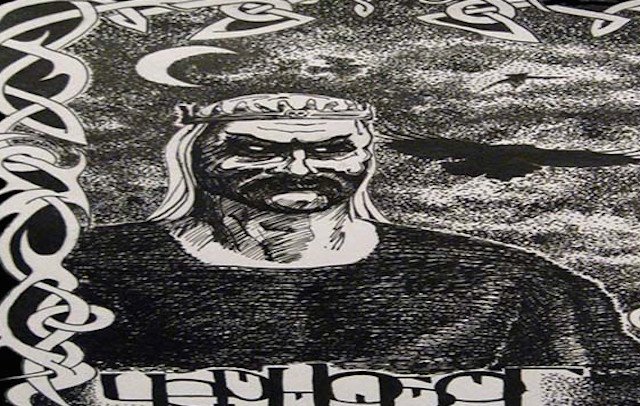
Among all of the Slavic deities, none was more feared than Crnobog. Also known as Cert or Cernobog, this “dark master” was the god of night, chaos, misfortune, and winter, generating all the evils around the world. It was said that his reign of power started with the winter solstice, when night is longest, and lasts until spring when power changed hands in favor of Belobog, the god of light, goodness and summer.
These two deities were seen in contrast with each other, even though, due of their joined efforts, the world was born. During their creation, they came into conflict and the universe as we know it came into being as a direct result of their discord. How the Slavs saw this duality between good and evil, however, is quite different from how Christianity does today. Crnobog was by no means a lesser god and was worshiped by people regardless of what he brought forth. Death, chaos, and misfortune were seen as part of everyday life, like a sort of equilibrium with all the good things that were happening to them.
Most of what we know about Slavic mythology and customs come from Helmold of Bosau, who was a Saxon priest and historian in the 12th century town of Bosau, in what is now present day Germany. He was responsible for the Christianizing of the Polabian Slavs. In one of his records he mentions how, during feasts, these “pagan” people would all drink from the same cup, uttering a curse and not a prayer. This curse was intended not towards others, but towards themselves, showing that the Slavs were welcoming hardship and bad luck as the will of the divine and necessary to life.
9: Coatlicue – The Aztecs
coatlicue
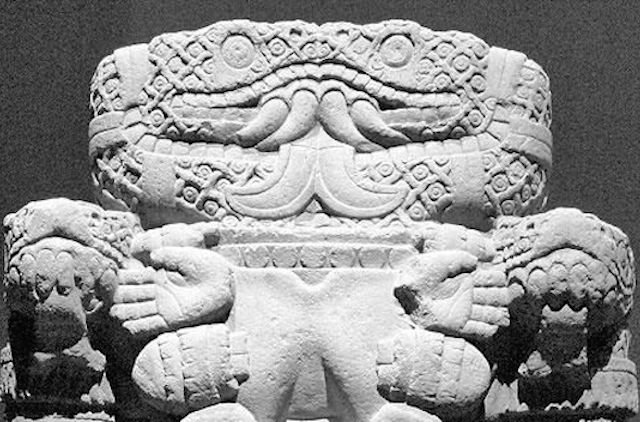
To better understand this Mother Goddess and how she was regarded by the Aztecs, we have to first look at how these mighty people of Central America viewed the world. They believed that the Earth is currently in its 5th era (or sun). In order for these eras and, in fact, each day to come forth, the sun needed a constant source of human blood as sacrifice. This is the reason why the Aztecs were seen by the Spanish Conquistadors in the early 16th century as savage, bloodthirsty barbarians worshiping demons. Blood was sacred to the natives and they rarely killed their opponents in battle, instead opting for capturing and sacrificing them atop their high altars. This was seen as a great honor and the best way for a human to die since the ones sacrificed were able to live as kings in the afterlife.
The story of Coatlicue tells us
that before the dawn of the 5th age, she was an earth goddess sweeping the shrine on top of Mount Coatepec (or Snake Mountain) when a feather fell from the sky into her apron. This led to her immaculate impregnation, and birth of the mighty Aztec god of war and the sun, Huitzilopochtli.
Hearing of this “abomination”, her daughter Coyolxauhqui (“Painted with Bells” and representing the Moon) rallied her 400 brothers, the Centzon Huitznahua (“Four Hundred Huiztnaua”, who represented the stars of the southern sky) in order to kill Coatlicue. Fortunately, one of her sons had a change of heart and warned her of the imminent attack. Huitzilopochtli then emerged from his mother’s womb, fully grown and sword in hand, killing the attackers including Coyolxauhqui herself, portraying the victory of the Sun over the Moon and stars.
Back in 1790, Antonio León y Gama, a historian living in Mexico City made a “terrifying” discovery when he uncovered a 2.5 meter (8.4 feet) tall basalt statue, in the heart of the city. Since the capital of present day Mexico was built right on top the Aztec capital city of Tenochtitlan, this is no surprise, but the fact that this imposing statue is covered with snakes, human hearts, and skulls, however, was.
The statue depicts Coatlicue with a necklace made of human hearts and hands while her belt buckle is a human skull. Her skirt is made of intertwined snakes (Coatlicue means Serpent Skirt), as well as her arms and head, which is represented by two snakes facing each other, depict in Aztec terms, streams of blood. Coatlicue along with other goddesses sacrificed themselves in order for the world to enter its 5th era. Considered to be way too frightening and pagan, the statue was reburied and only resurfaced in the 20th century, being currently presented at the National Museum of Anthropology in Mexico City.
8: Sekhmet – The Egyptians
sekhmet
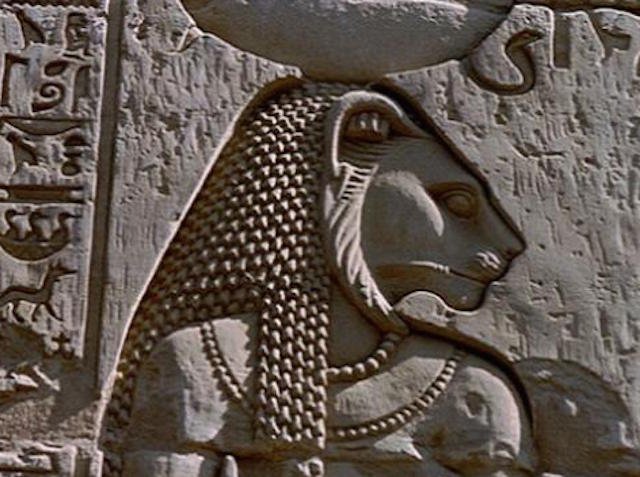
Sekhmet was the Egyptian goddess of war and destruction, depicted with a lioness head and among the most feared by her people of ancient times. Her creation came forth when the sun god Ra was so fed up with humanity’s evil ways and disobedience towards him that he ripped out his eye and threw it at mankind. This divine eye became Sekhmet, and she began butchering people in a frenzy, and drinking their blood. When Ra saw the rate at which she was killing his people, he realized that soon enough there would be no one left on Earth, so he tried to calm her. He then turned the Nile into a mixture of beer and pomegranate juice resembling blood, tricking Sekhmet into drinking from it.
She became inebriated and fell asleep and that’s when Ra transformed her into the gentler goddess Hathor. Because humanity was saved from Sekhmet’s destruction, the Egyptians celebrated on the first month of the year with “The Festival of Drunkenness” where, as its name suggests, everybody throughout the kingdom became drunk and participated in mass orgies, trying to reenact her transformation. Nevertheless, priests would have to perform a sacred ritual in front of a different statue of Sekhmet (from among more than 700) twice per day, every day of the year, in order to keep her at peace and to never wreak havoc on humanity ever again.
7: Hel – The Vikings
hel

As you probably guessed by now, Hel is the goddess of the underworld, Helheim, within the Norse pantheon. Her name is the most likely source for the Christian term of Hell used today. In any case, she was regarded by the Vikings as the ruler of the underworld and in charge of those who died of either illness or old age. Those who died in battle, on the other hand, went to Valhalla to join Odin and the other gods.
Hel is the daughter of the mischievous god Loki and the giantess Angrboda. Her siblings are the wolf Fenrir and the world serpent Jormungand. She is depicted as a rather greedy demigod with half her body alive and the other dead. It was said that along with her birth, disease also came into the world. Sweeping through towns and villages, she either kills everybody or spares some of them, depending on whether she uses a broom or a rake.
Following the death of Baldur (son of Odin), the goddess Frigga sends word to ransom him from Helheim. Hel agrees, but only if every living creature will mourn Baldur’s passing. This came true and all creatures, big and small, cried after him (with the exception of the giantess Thokk, who was actually Loki in disguise). So Baldur remained in Helheim besides Hel, awaiting Ragnarok (the end of time). Hel is usually portrayed in black and white and represents both sides of the spectrum as a simultaneous time of endings and beginnings.
6: The Morrigan – The Celts
morrigan
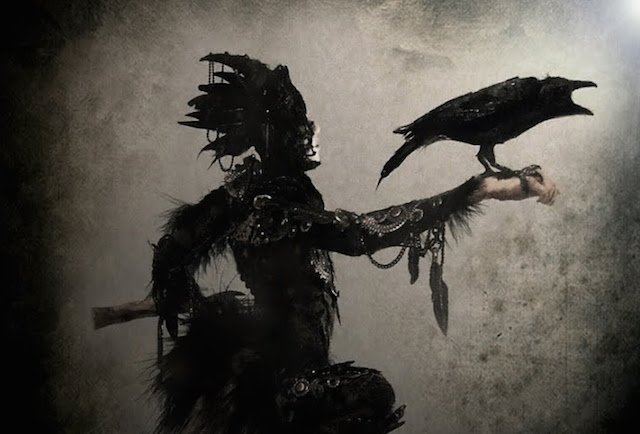
The Morrigan is the goddess of war, battle, strife, and fertility in Celtic mythology. Most notably in Ireland, but also in other parts of Europe, especially France, the Morrigan was one of the most revered gods. Also known as the “Great Queen” or “Phantom Queen”, she was depicted as one goddess or as a trio of sister goddesses. This trio sometimes differs, but in the majority of cases it’s comprised of Badb (crow), Macha (sovereignty) and Nemain (frenzy in battle). Think of this triad as something similar to the Christian trinity; not as separate gods but rather as different aspects of the same one.
The origins of the Morrigan can be traced back all the way to the prehistoric Cult of the Mothers and may as well be the oldest form of worship and religion in Europe, dating back some 30,000 years. In the Celtic mythos, she, either alone or in her trio form, appears during periods of strife, on the battle field, or just before it. Also known as the Washer at the Ford, the Morrigan is often times portrayed as washing the armor and clothes of the ones who will be killed in the upcoming battle. This is something similar to what the Valkyries in the Viking mythology do when they shed feathers on the ones whose lives are soon to be forfeit. They also are the ones who carry the souls of the slain into the next world. Morrigan also does this.
Able to take the form of a crow or raven, she almost always appears surrounded by these ominous birds. But in some places she is depicted in the form of a wolf or cow. The latter seems to indicate that she was also considered the goddess of fertility of the land and sovereignty. Some scholars even believe that this was her primary aspect and not that of frenzy and death on the battlefield.
5: Elrik – Siberian Shamanism
elrik
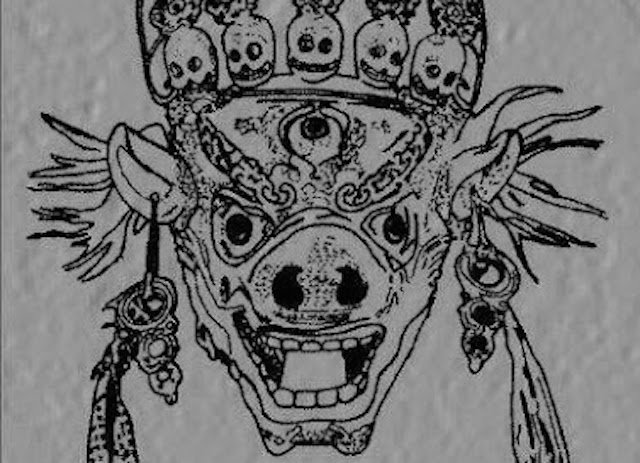
Sometimes shown as a totemic bear, Elrik or Erlig was the first creation of Tengri or Ulgan; the creator god of the Turko-Mongol peoples in Siberia. Elrik is closely connected to the creation of humanity, but also the teacher of sin, and later the ruler of the underworld, of darkness and judge of the dead.
One day Ulgan, the second most important deity after Kudai, saw a piece of mud floating in the ocean. He gave it a spirit and named it Elrik. However, this new friendship and bond between them would not last as Elrik was driven by pride. He wanted to be equal to his creator, even though he was in a position inferior to him.
Once, as he was commanded by Ulgan to lift a piece of earth from the ocean floor, Elrik kept a piece of it in his mouth to use it later for his own creations. When it started to expand, similar to the piece Ulgan threw over the waters to create land, he nearly choked to death. Ulgan then told him to spit it out and subsequently, all the lands that were formerly in his mouth are now bogs, marshlands and other nasty places across the face of the Earth.
In another story, while Ulgan was modeling humans out of clay, he realized that he could not give them life. He went to the almighty Kudai to ask for his assistance. During his absence he left a “naked” dog to guard his creations. Elrik seeing this, bribed the dog by offering him a golden coat of hair. With “the soulless ones” in his possession, he defiled them by spitting on them. On his return, Ulgan turned the clay models inside out and that’s why humans have spittle inside them and not on the outside.
Elrik was then banished in the 9th layer of the Earth, but not before taking some of the clay dolls with him. These later became his sons and daughters which are his minions and do his bidding. Elrik took charge of all those who were dead, leaving Ulgan in charge of “those with breath”. This apathy towards the dead, like is the case of Ulgan, is something quite common among creator gods in North Asia.
4: Ahriman – The Persians
ahriman
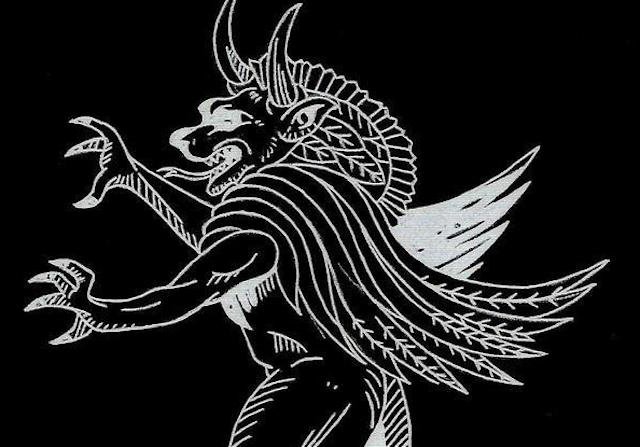
According to Zoroastrianism, the main religion in the Persian Empire, Ahriman or Angra Mainyu was the god of all that is bad and chaotic in the world. He is the evil twin brother of Spenta Mainyu or Ahura Mazda; the “Wise Lord.” Everything that the latter one did, Ahriman would do the opposite. He was also responsible for all hardships man had to endure in the world. He was responsible for the frost in winter or the intense heat in summer. Death, however, was another matter.
“In the beginning,” said Zoroaster, “the twin spirits were known as the one good and the other evil, in thought, word, and deed. Between them the wise chose wisely, not so the fools. And when these spirits met they established life and death so that in the end the followers of deceit should meet with the worst existence, but the followers of truth with the wise lord.” In short, they both decided and created death so people who were good should join Ahura Mazda, while the evil ones, Ahriman.
The prime weapon Ahriman had against humanity and all that is good was lust. In the beginning, man was almost holy and deeply righteous. The human race would play a crucial role in destroying evil from the face of the world. When Ahriman saw man like this, he fainted and stayed like this for three thousand years. That’s until Jeh woke him up and “defiled herself” with him. She is also the one who coveted man and weakened his spirit.
Ahriman, and indeed the Zoroastrian religion, was the first to have a clear and definite dualism of good and evil. Being especially prevalent during 600 BC, it was a major source of inspiration for the later monotheistic religions which occurred in the Levant (Judaism, Christianity and Islam). Ahriman is also considered by many to be the predecessor of Satan.
3: Batara Kala – The Javanese and Balinese
batarakala

According to the Javanese and Balinese Batara Kala is an ogre like deity, responsible for the creation of light and the earth, the ruler of time, bringer of destruction and devourer of unlucky people. He is also the ruler of the underworld, together with his consort Setesuyara, who both live in a cave.
Batara Kala is the son of Java’s own version of Shiva, Batara Guru. This guy had the most beautiful wife in the world, named Dewi Uma. One day, in a fit of lust (probably given to him by Ahriman), Batara Guru forced himself on her on top his Vahana Nandi, a divine cow. Dewi Uma felt so ashamed that she cursed both of them and took on the hideous form of ogre-like creatures.
From this union came Batara Kala who also appeared as a fierce ogre with an insatiable appetite and extremely rude behavior. He was sent on Earth by the devas (gods) in order to punish the wicked. Unfortunately, Batara Kala was only interested to eating people at random, in order to satisfy his appetite and the devas were forced to call him back. He was later made the ruler of the underworld.
People generally try to acquire his favor in order to prevent misfortune and be eaten by him. Batara Kala is also believed to be the cause for eclipses as he is a sworn enemy of both the moon and sun gods. When this happens, people will bring sacrifices or make a lot of noise in order to make him vomit and return the heavenly bodies back in the sky.
2: Sedna – The Inuit people of Canada and Greenland
sedna
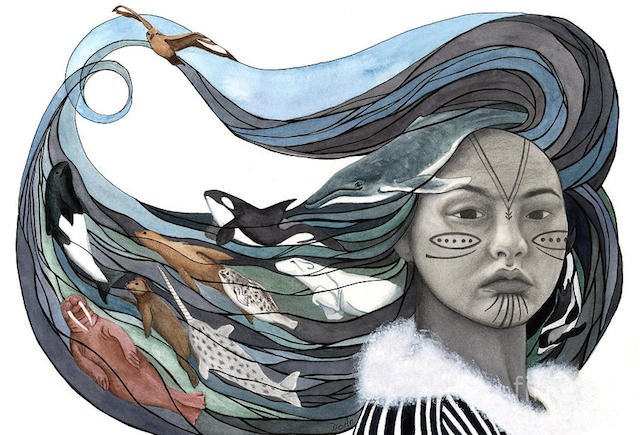
The story of Sedna varies a bit from one region to the next, but it begins everywhere like a fairy tale. She is the beautiful daughter of a widower who is constantly trying to marry her off. None of her suitors seem to impress her so she never choses one. One day however an Inuk comes by and promises her all the food she could eat and all the furs she will need and all the blankets in the world. She then agrees to marry him and go off to his island.
Once there, she realizes that the man she married was no man at all but a Fulmar (a Nordic sea bird) dressed as a man. All he had to offer, instead of the promises he made, was a filthy nest and some raw fish he was able to catch. When her father came to visit and found his daughter in such a sorry condition, he decided to take her back home in his kayak. Now, if he killed the Fulmar or he just isn’t home varies, but what’s for sure is that once at sea, either the Fulmar or his family of birds go chasing after Sedna and her father.
A battle breaks out and because of the immense flatter of wings; huge waves are formed, rocking the kayak violently. The father then throws Sedna off the boat in the hopes that it will appease the birds and save his own life. She then tries to cling on to the boat, but her father cuts of her finger one by one. She drowns and becomes the spirit of the ocean while her fingers become the fish, seals, walruses and whales, the Inuks hunt for food.
From Adlivum (the Inuit Land of the Dead) where Sedna now resides and rules, she sends food to her people. If she is not properly worshiped, she will make her people suffer. Every now and again, shamans have to make the arduous journey past many horrors to her underwater lair. Once there they have to massage her aching limbs and comb her hair, and only then they are allowed to return to their people and inform them that they are spared once again from her wrath and starvation.
1: Adro – Lugbara people of Zaire and Uganda
adro
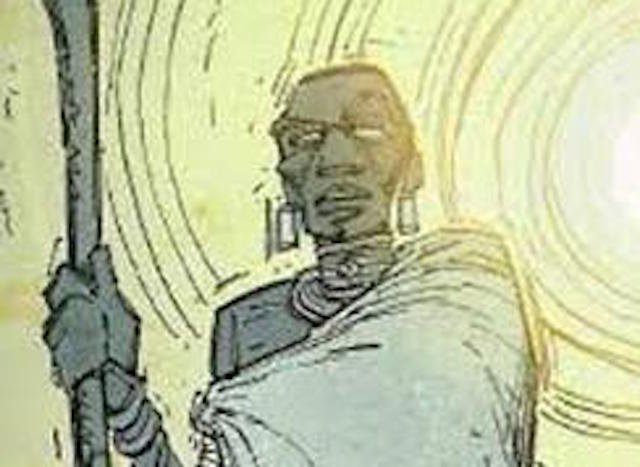
Like many gods and deities of African origin, Adro is just one aspect of the same supreme god; the evil one. The other, benevolent side is called Adroa, “god in the sky”, remote from mankind and onyiru, ‘good’. Adro on the other hand is the “god on earth” and onzi, ‘bad’. Each one of them has half a body: one eye, one ear, one arm, one leg, one kidney etc.
Adroa, living in heaven was out of human reach and was regarded as perfection itself. Adro was taking care of matters here back on Earth and was the only one who could come in contact with humans. Even though invisible to people, he can transform himself into a snake and sometimes show himself as an almost translucent, tall and white half-man, to people who are about to die. He also may appear as a whirlwind or can even be heard crying in a grassfire. He possesses young women, causes sickness and death and abducts people in order to eat them.
His children who are called the Adroanzi are guardian spirits of the dead and resemble serpents. They usually live in trees, rivers, streams and rocks and sometimes follow people at night. If the people who are followed look back, they are killed by the Adroanzi, if not, they are protected by them on their journey through the darkness.
To gain his favor, people used to sacrifice their children to him. Those who didn’t, became “Adroanzi” after death. In the 1930s however, this practice was abandoned and a ram was usually sacrificed instead.
i just upvoted you and follow you thanks